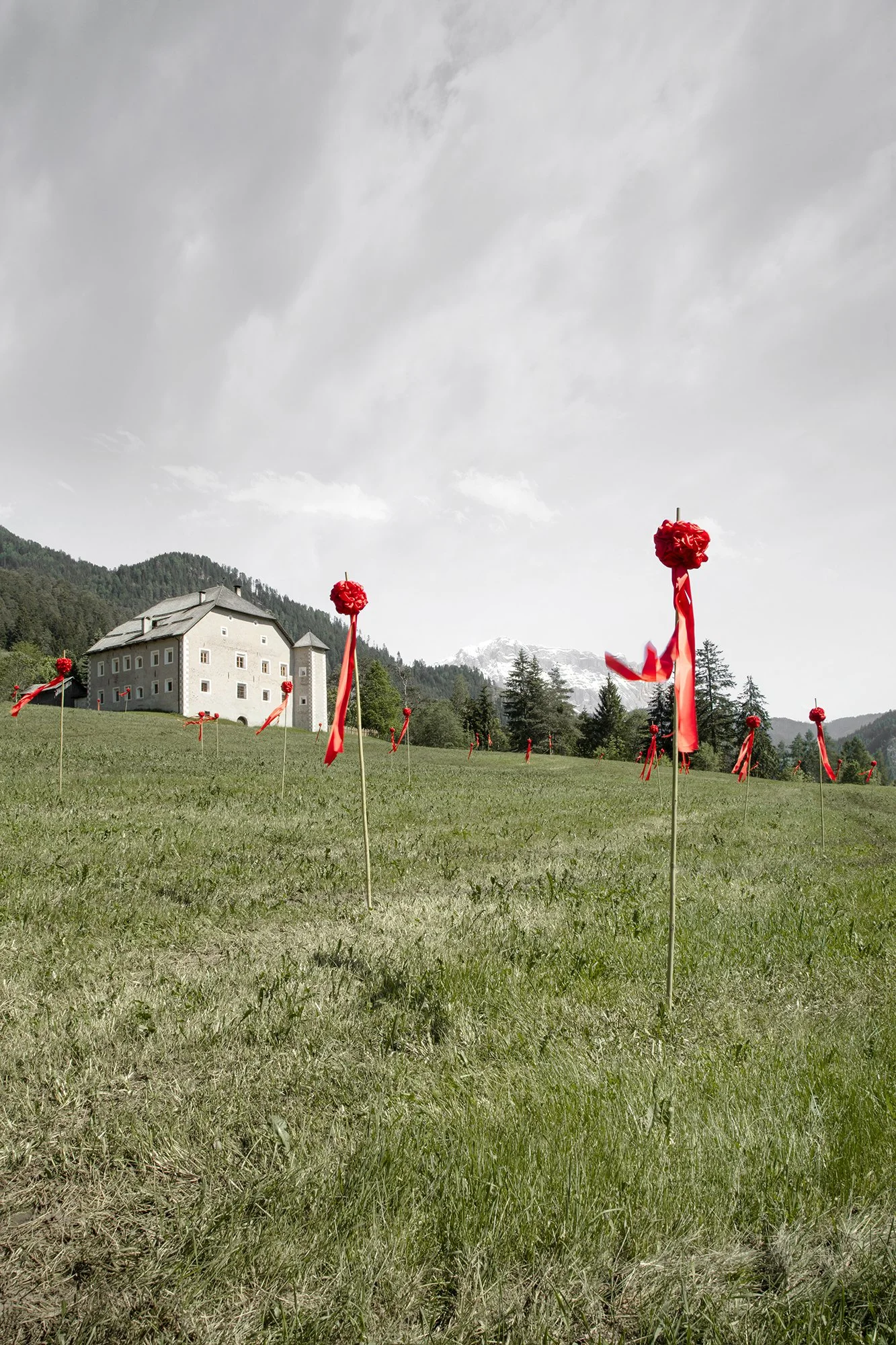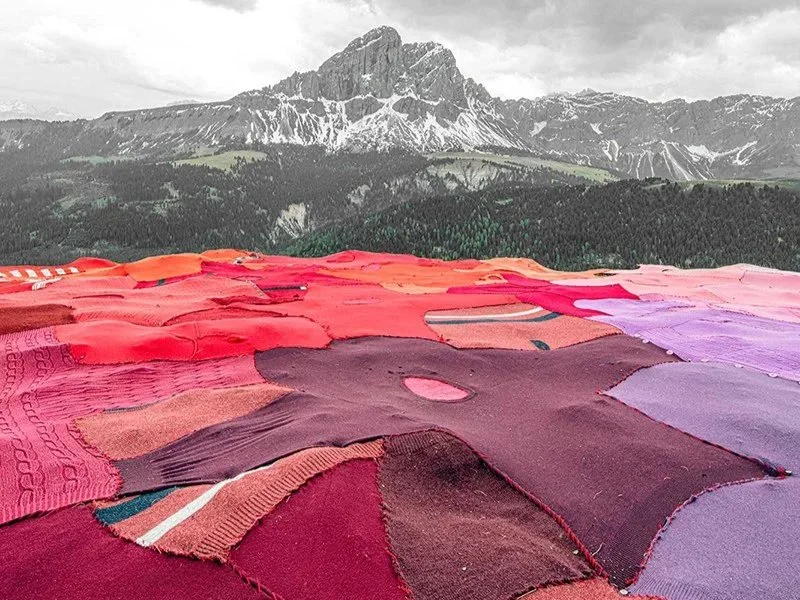Garden
Qai Jiang
Qai Jiang Hew's work consists of planting poles in the lawn, draped in sumptuous red cloths, to stylise the shape of a flower and thus create a garden, in this case a rose garden - a clear reference to the Catinaccio massif, which in German is called Rosengarten, literally rose garden. The red colour is relevant for the pale Dolomites, so much so that it is at the centre of King Laurin's saga and the wicked curse involving the formidable appearance of the enrosadira (the reddening of these mountains at dawn and dusk); and it is precisely this chromatic power that links the exhibition context to the Chinese culture of the artist, he seeing red as a colour of good omen; the result is an expression of the Heimat, which, even far from home, can be evoked in the comfort of essential details.


Exhibit place Plaies y Alfur
Picolin is located between the old Val Badia road and the "Strada de la Vena", a route used to carry iron from Fursil to Val Badia in late-mediaeval times. Various historical buildings and the chapel dedicated to St. Anthony stand as testimony to the importance of the place in terms of its strategic interest to the nobles and clergy. Above all, "Ćiasa dl Maier", once headquarters of the bishop's forge in Alfur, and the Alfur hamlet itself are of great historical interest. The new "Piz de Plaies" cableway base station was built along the road a few years ago, on the section between "Ćiasa dl Maier" and "Alfur".











